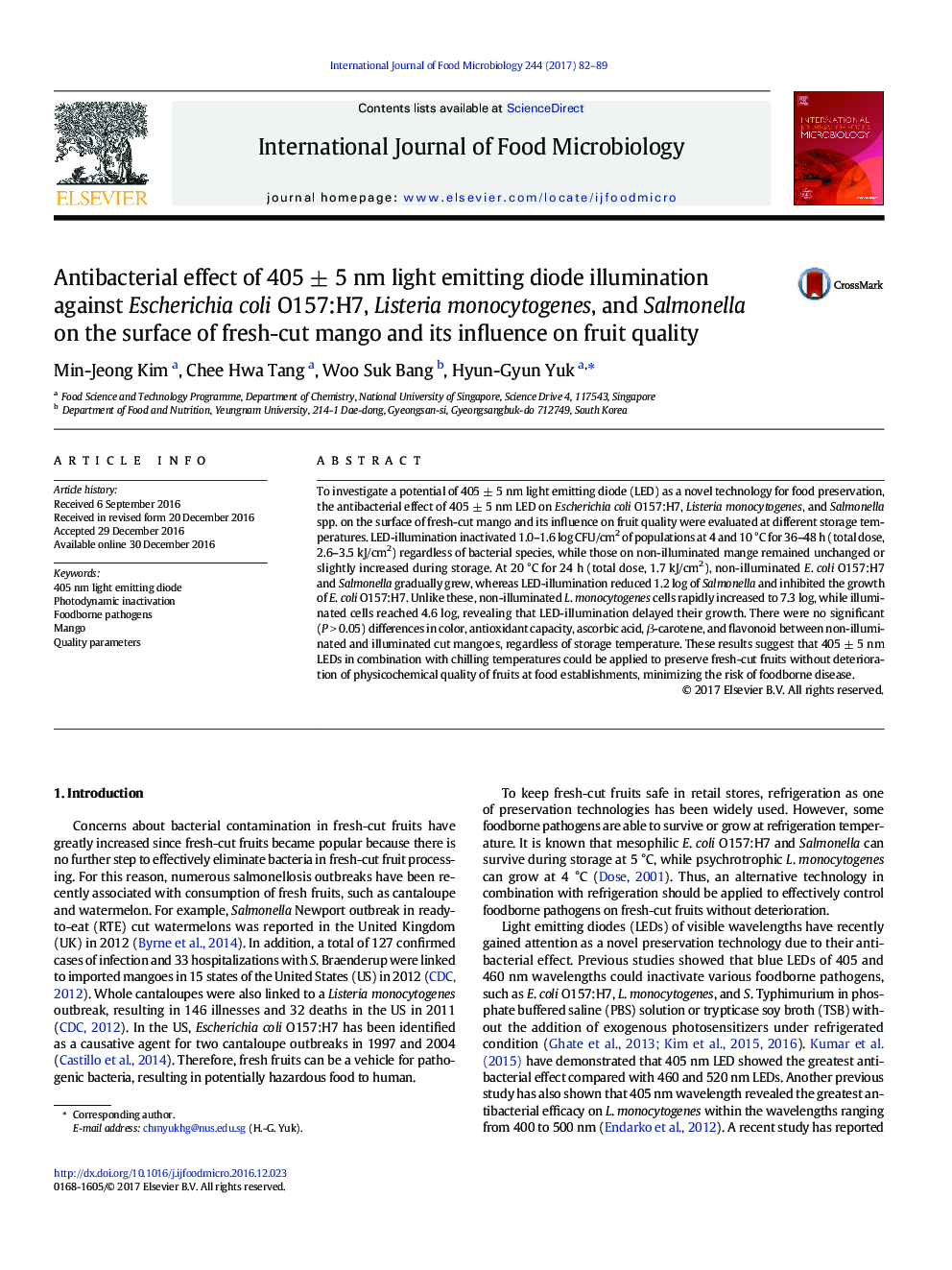| کد مقاله | کد نشریه | سال انتشار | مقاله انگلیسی | نسخه تمام متن |
|---|---|---|---|---|
| 5740920 | 1616539 | 2017 | 8 صفحه PDF | دانلود رایگان |

- A 405 nm LED illumination inactivated pathogens on fresh-cut mango at 4 and 10 °C.
- Long-term LED illumination did not affect physicochemical quality of cut mango.
- 405Â nm LEDs in a food chiller might be used to preserve cut fruits.
To investigate a potential of 405 ± 5 nm light emitting diode (LED) as a novel technology for food preservation, the antibacterial effect of 405 ± 5 nm LED on Escherichia coli O157:H7, Listeria monocytogenes, and Salmonella spp. on the surface of fresh-cut mango and its influence on fruit quality were evaluated at different storage temperatures. LED-illumination inactivated 1.0-1.6 log CFU/cm2 of populations at 4 and 10 °C for 36-48 h (total dose, 2.6-3.5 kJ/cm2) regardless of bacterial species, while those on non-illuminated mange remained unchanged or slightly increased during storage. At 20 °C for 24 h (total dose, 1.7 kJ/cm2), non-illuminated E. coli O157:H7 and Salmonella gradually grew, whereas LED-illumination reduced 1.2 log of Salmonella and inhibited the growth of E. coli O157:H7. Unlike these, non-illuminated L. monocytogenes cells rapidly increased to 7.3 log, while illuminated cells reached 4.6 log, revealing that LED-illumination delayed their growth. There were no significant (P > 0.05) differences in color, antioxidant capacity, ascorbic acid, β-carotene, and flavonoid between non-illuminated and illuminated cut mangoes, regardless of storage temperature. These results suggest that 405 ± 5 nm LEDs in combination with chilling temperatures could be applied to preserve fresh-cut fruits without deterioration of physicochemical quality of fruits at food establishments, minimizing the risk of foodborne disease.
Journal: International Journal of Food Microbiology - Volume 244, 6 March 2017, Pages 82-89